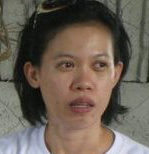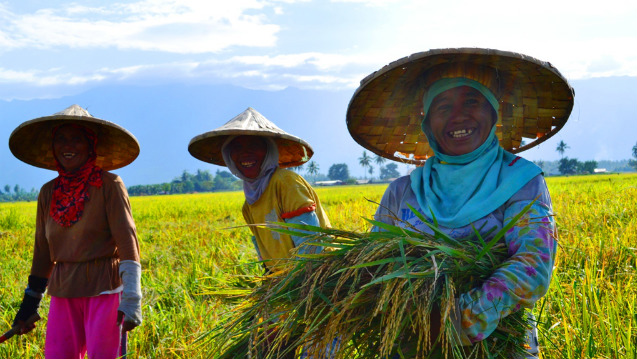SUMMARY
This is AI generated summarization, which may have errors. For context, always refer to the full article.
 On October 15, the world will celebrate the International Day for Rural Women.
On October 15, the world will celebrate the International Day for Rural Women.
A quick survey among mothers from the rural areas reveals that they are as mindful of their children’s future as their present-day needs.
So, what are the needs of rural women? Women’s rights group Pambansang Koalisyon ng Kababaihan sa Kanayunan (PKKK) gathered input from the lives of rural women to determine these needs.
Housing
Lynie, a mother of 3 and grandmother of 2, hopes that the government will ensure housing assistance that is accessible and affordable, i.e. not exceeding 6% of a household’s income. More than housing rights, many rural mothers also worry about the land they occupy. They confront various property rights issues, ranging from the absence of coverage under agrarian reform program to being threatened by corporate interests such as mining and plantations.
Education
Deng, a single mother of 2, hopes for education for all. She wants the government to ensure equal opportunities not only for students with high marks but for students who have yet to reach their full potential.
Right now, undernutrition is responsible for stunting the growth of 32% of children under 5 years old in the Philippines. According to a 2013 report by UNICEF, undernutrition is a sure predictor of poor performance in schools and definitely leads to reduction in schooling (more on that below).
Food
Anabel, a single mother of 6 and a grandmother to 6 grandchildren, hopes for leaders who will prioritize the needs of the people and ensure a food-secure future for the “children of her children.”
In her village, where Anabel also serves as fish warden and fisherfolk leader, ensuring a future for her children’s children means protecting the coastal resources from commercial fishing activities that threaten their sources of food and livelihood.
In a situation of over-fished waters, it is no surprise that municipal fisherfolk are among the poorest sectors in the country. Mothers like Anabel have to take on multiple jobs to provide food on the table. (WATCH: PH oceans in crisis)
Around 60% of the poor household’s income goes to food, effectively reducing household budget for housing and children’s education needs. For many rural women, whose main contribution to the country is producing the food to feed the rest of the population, it is imperative that a political platform addresses hunger.
These women can only feel that hunger is truly being addressed if they feel they are being supported as food producers. According to a 2011 Oxfam study, missing out equal support for women’s productivity in the country means missing the opportunity to improve total food production by 3%.

It must be noted that food availability does not automatically resolve issues of hunger and undernutrition, which if remained unaddressed will only lead to a further decline of the country’s health situation.
Around 3.5 million children under 5 years old in the country are suffering from moderate to severe malnutrition. This is expectedly more evident in the countryside. According to UNICEF, stunting incidence globally is higher in the rural areas (above 30%) compared to the urban areas (around 25%).
One effective way to address stunting is though maternal nutrition. An often-ignored component in food programs is the message of relating it with women’s reproductive rights. It has been observed that the window of opportunity in preventing the child’s undernutrition is by targeting the first 1,000 days covering pregnancy and the child’s first two years.
This brings again the attention to the impoverished mothers, who on top of having limited access to sufficient and good food, also have little access to reproductive health services.
Nutrition and Reproductive Health
Mary, a mother of 6 and grandmother of 14, hopes that the Supreme Court will finally respect the reproductive health law. She sees this as instrumental to ensuring that every woman, especially young women, will know how to take full control and good care of their bodies.
Gilda, a mother of 3 and grandmother of two, is hopeful for a truly pro-people and gender-responsive government and for the implementation of the Responsible Parenthood and Reproductive Health Act (RA10354).
Income opportunities
Income barriers have continued to disempower rural women in terms of food production and food access. In a national survey 5 years ago called CentroSaka that focused on women in agriculture, it was revealed that less than a third have access to support services and social protection.
At that time, women agricultural workers were earning less than the men by around P20 on a daily average, which apparently improved in 2011 with a wage differential of P8 a day. A 2012 BAS study suggests that agricultural wage rates for women are declining by 0.31%, but wage rates for men are going up by 0.24%.
But even if rural women do get access to income opportunities, there is a need for its practical benefits to be sustainable. These are more likely to be sustained if there are strategic policies in place, such as: agrarian reform in the case of farmers, fisherfolk settlement in the case of fishers, and certification of ancestral domain claims in the case of indigenous peoples.
So as we all celebrate the International Day for Rural Women, our rural women-friends have this wishlist. – Rappler.com
Maria Daryl Lardizabal Leyesa is a member of PKKK and Sarilaya. She was part of the original group that convened the 1st National Rural Women Congress in 2003; she was then the Rural Women Coordinator of the Philippine Peasant Institute. The group has since evolved into PKKK.
This piece is part of Oxfam’s GROW campaign which calls for better ways to grow, share and live together, a campaign for the billions of us who eat food and over a billion of women and men who grow it.
Oxfam is an international confederation of 17 organisations networked together in more than 94 countries, as part of a global movement for change, to build a future free from the injustice of poverty.
Rappler and Oxfam will be having a Google+ Hang-out on Tuesday, October 15, in celebration of International Day for Rural Women.
Add a comment
How does this make you feel?

There are no comments yet. Add your comment to start the conversation.